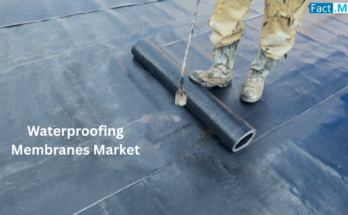Minerals of the type graphite are found in igneous and metamorphic rocks. It typically develops when carbon is exposed to extreme pressure and temperature in the earth’s crust. Another naturally occurring type of crystalline carbon is considered to be graphite. The mineral is known as the mineral of all extremes yet is an intriguing one nonetheless.
The natural form of graphite is widespread and abundant throughout the planet. However, depending on the mineral’s source, it is typically divided into three forms: flake, crystalline, and amorphous.
Graphite is a key element in the steel and electrical industry
Historically, the primary driver of demand for graphite has always been its industrial applications. It’s majorly used in steel production, and various alumina-graphite kinds, including nozzles and troughs, are used in continuous casting ware. Steel use is projected to expand, which will raise the demand for graphite.
Because more steel is being produced in electric arc furnaces, there will likely be greater demand for graphite. In refractories, natural graphite is used to make crucibles and mag-carbon bricks. Graphite is used as a liner in both electric arc furnaces and steel converters.
Graphite is currently used extensively in the manufacture of steel, electrodes, refractories, foundries, carburizes, and friction goods, which account for over 65% of the market. Every eight to ten hours, high-purity graphite electrodes are used in the EAF process to make steel.
Additionally, foundry facings are covered in graphite to facilitate the removal of hot metal. It is anticipated that each of these causes will increase demand for graphite in the metallurgical end-user sector.
Graphite an Element in Mainstay in Rising E- Mobility arcade
Apart from being a key element in the steel and other end-user industry, graphite anodes are used in the production of batteries. Companies in Europe and North America are building an integrated graphite supply chain.
Carbon electrodes, brushes, and plates required for dry cell batteries and the electrical sector are made using crystalline flake graphite. It’s interesting to note that synthetic graphite can also be made from natural graphite. Lithium-ion batteries can benefit from using this kind of graphite.
As the market of electric vehicles has grown rapidly in the last few years it’s anticipated to foster demand for graphite in EVMs. The availability of fossil fuels is limited and rising fuel prices are motivating factors for people switching to E-vehicles.
Increasing investments in e-mobility and battery grid storage are expected to boost graphite use in these areas. In addition, traditional end users such as steelmaking and refractories are likely to maintain their demand over the next few years.
Although batteries only make up a small percentage of the global graphite market, technological advancements in this field will create substantial growth opportunities for spherical and expanded graphite in the years to come. The Li-ion battery industry is growing as a result of electronic gadgets, grid storage, and vehicle electrification.
China reigns the graphite production
China has a significant chunk of the world’s consumption and production of graphite electrodes. China produced almost 500 kilotons of graphite electrodes, of which almost 60% were used domestically. Graphite is now being used more frequently in the steel industry for specialized purposes. However, increasing investment into batteries and e-cars in North American and European countries is expected to hold major demand in times to come.
Derivatives of Graphite are set to unfold Greener Future.
Graphene sheets can be produced using graphite. According to claims, these sheets are 10 times lighter and 100 times stronger than steel. Further applications for this graphite derivative include the production of durable yet lightweight sporting goods. Many people are thinking about potential uses in the medical and aerospace industries.
Electric vehicles (EVs) and clean energy technologies provide a route to a sustainable future as the world progresses toward decarbonization. These technologies, however, depend heavily on minerals, and the minerals they need are rising in value. Graphite and other essential minerals are becoming more crucial as we move towards renewable energy. However, it’s equally crucial to control raw material production’s efficiency and impact on the environment. Natural graphite is the ideal anode material for a greener future since it has a smaller impact on the environment and cheaper production costs.


